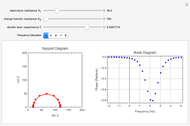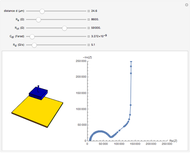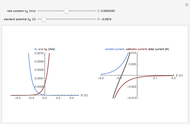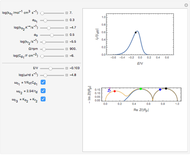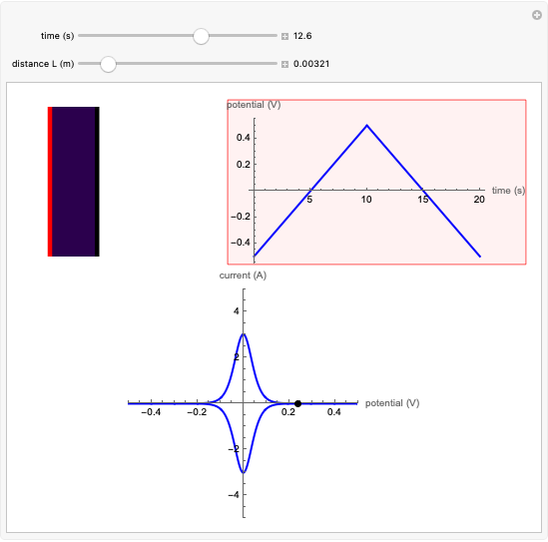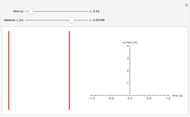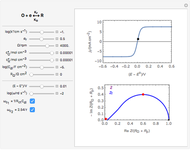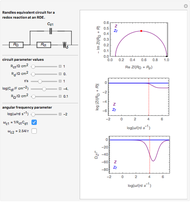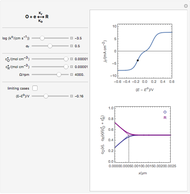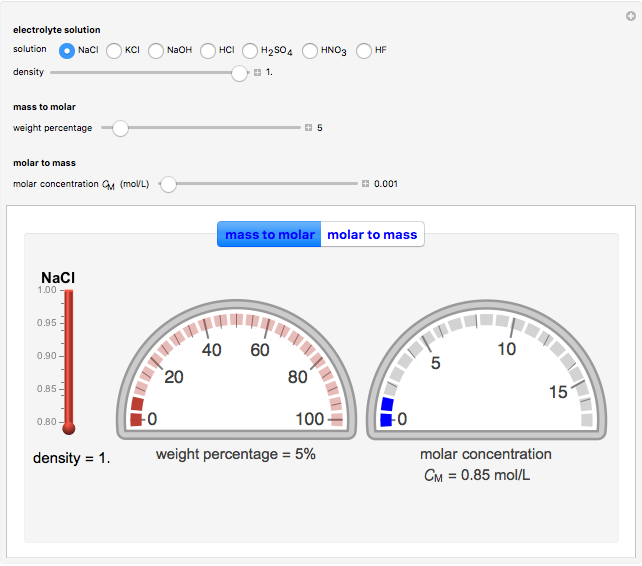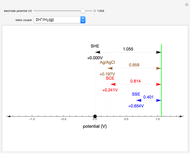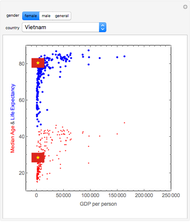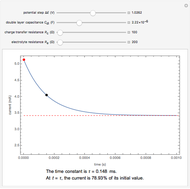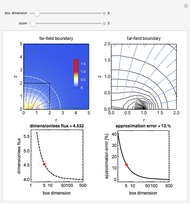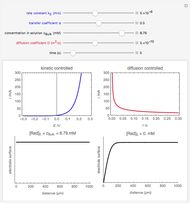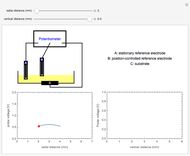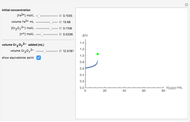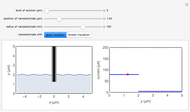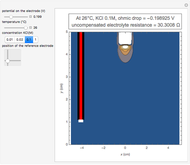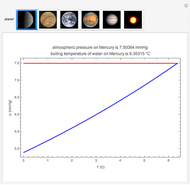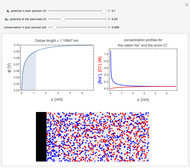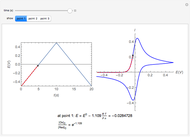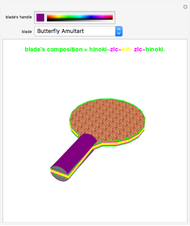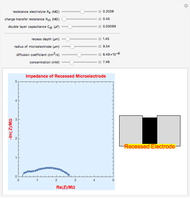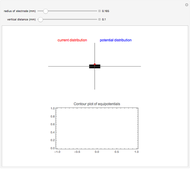Diffusion and Kinetic Controlled Electrochemical Reactions

Requires a Wolfram Notebook System
Interact on desktop, mobile and cloud with the free Wolfram Player or other Wolfram Language products.
An electrochemical reaction on the surface of an electrode can occur by two limiting mechanisms: the reaction is controlled by kinetics and the reaction is controlled by the diffusion of the electroactive species. When the diffusion of the species is infinitely fast, the phenomenon is controlled by kinetics. When the kinetics are extremely fast, the phenomenon is controlled by the diffusion (mass transport) of the species that enters or leaves the electrode surface. This Demonstration shows the current on the left (blue) when controlled by kinetics and on the right (red) when controlled by diffusion.
Contributed by: Quang-Dao Trinh (April 2011)
Open content licensed under CC BY-NC-SA
Snapshots
Details
At the electrode surface, the redox reaction can be written:  . Assume that there is only reductor in the solution with concentration
. Assume that there is only reductor in the solution with concentration  (mM).
(mM).
When the diffusion is very fast, the current depends only on the kinetics. Because of the fast diffusion, the concentration at the surface of the electrode  is equal to the concentration in the bulk solution:
is equal to the concentration in the bulk solution:  .
.
The reaction rates of the oxidation direction  depend on the applied potential
depend on the applied potential  at the electrode:
at the electrode:
 , (1)
, (1)
where  (in V) is the standard potential of the redox reaction,
(in V) is the standard potential of the redox reaction,  is the applied potential,
is the applied potential,  is the gas constant (8.314 J/K mol),
is the gas constant (8.314 J/K mol),  is the Faraday constant (96485 C/mol),
is the Faraday constant (96485 C/mol),  (in K) is the temperature,
(in K) is the temperature,  is the number of electrons transferred,
is the number of electrons transferred,  is the standard heterogeneous rate constant (in m/s), and
is the standard heterogeneous rate constant (in m/s), and  is the transfer coefficient.
is the transfer coefficient.
Then current is calculated from  , where
, where 
 is the surface area of the electrode, and
is the surface area of the electrode, and  is the concentration of the reductor at the surface of the electrode.
is the concentration of the reductor at the surface of the electrode.
When the kinetics are very fast, the concentration at the surface of electrode  is always zero (
is always zero ( ) because the reductor is oxidized very quickly. Then the current depends on the diffusion of the reductor from the bulk solution to the electrode surface. The current in this case depends on the rate of diffusion at the surface
) because the reductor is oxidized very quickly. Then the current depends on the diffusion of the reductor from the bulk solution to the electrode surface. The current in this case depends on the rate of diffusion at the surface  , given by
, given by
 , (2)
, (2)
where 
 is the diffusion coefficient.
is the diffusion coefficient.
This Demonstration shows that when the diffusion occurs ( ) one must use equation (2) instead of equation (1) to calculate the current. The kinetics-controlled case is simpler than the diffusion-controlled case because the diffusion equation (a partial differential equation) must be solved. In this Demonstration, equation (3), a Cottrell equation, is used for a large electrode with planar diffusion.
) one must use equation (2) instead of equation (1) to calculate the current. The kinetics-controlled case is simpler than the diffusion-controlled case because the diffusion equation (a partial differential equation) must be solved. In this Demonstration, equation (3), a Cottrell equation, is used for a large electrode with planar diffusion.
Permanent Citation







